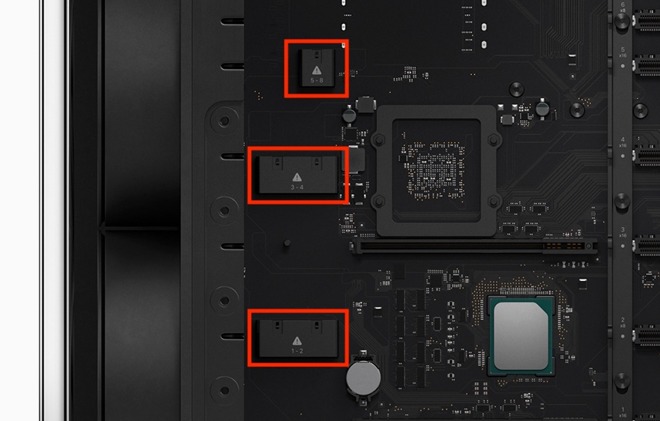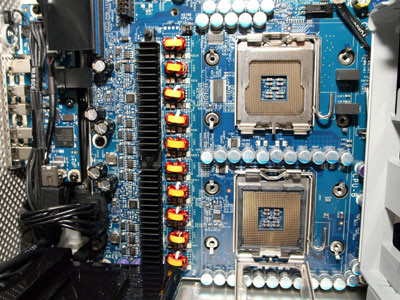Pci Cards For Mac
Sep 23, 2020 The Fusion Dual U.2 SSD PCIe Card is compatible on Mac, Windows, and Linux computers, including mid-2010, mid-2012 towers, and the 2019 Mac Pro. It also works in Thunderbolt 3 enclosures — which. An inexpensive card available from Amazon allows users of Apple's Mac Pro tower with PCI-E slots to get some of the benefits of the new USB-C connector — and faster USB 3.1 speeds.
- A PCI Express card exclusively for Mac Pro, Afterburner can be installed in any full-length slot, but it delivers maximum capability in a PCIe x16 slot. Compatible with Mac Pro (current generation) PCI Express x16 card Accelerates ProRes and ProRes RAW codec in Final Cut Pro X, QuickTime Player X, and supported third-party.
- Though the upcoming 2019 Mac Pro is a perfect platform for the Sonnet M.2 4x4 PCIe Card, the 'obsolete' Mac Pro tower can clearly benefit from the increased storage speed it provides. Though the PCIe 3.0 x16 slots in the 2019 Mac Pro are capable of up to 12,000 MB/s, the PCIe 2.0 x16 slots in the 2010 Mac Pro are limited to 6000MB/s.
- Mar 04, 2008 I retraced my steps - I bought the PCI-Express (not X!) from micronet, and their support guy told me: +Hello Will. There are drivers and info on the Siliconimage website. The+ +SATAPCIE2 card is more formally the SiI3132 when searching for drivers and+ +info. Reemember that this card will not support RAID5 on the Mac OS. Use+ +the base drivers.+.
The Mac Pro introduced in 2019 has eight PCIe slots:
- Four double-wide slots
- Three single-wide slots
- One half-length slot preconfigured with the Apple I/O card
Mac Pro includes one or two Radeon Pro MPX Modules that occupy slots 1-2 and slots 3-4. You can choose your MPX Modules when you order your Mac Pro or order them separately from Apple. Learn how to install PCI cards in your Mac Pro (2019).
Apple AMD Radeon MPX Modules
Apple currently has four different Mac Pro Expansion (MPX) Modules that contain AMD Radeon Pro graphics processing units (GPUs). Radeon Pro MPX Modules can use slots 1-2 and slots 3-4, and you can install one or two of each module:
Pci Wifi Card For Mac Pro
- Radeon Pro 580X MPX Module: one module only
- Radeon Pro W5700X MPX Module: one or two modules
- Radeon Pro W5500X MPX Module: one or two modules
- Radeon Pro Vega II MPX Module: one or two modules
- Radeon Pro Vega II Duo MPX Module: one or two modules
You can use Radeon MPX Modules along with other third-party PCIe graphics cards. If you use Boot Camp, using a Radeon MPX Module and a third-party AMD graphics card isn't supported when your Mac is using Windows. Learn about using AMD graphics cards with Microsoft Windows on Mac Pro (2019).
Apple I/O card
Mac Pro comes with the Apple I/O card, which has two Thunderbolt 3 ports, two USB-A ports, and a 3.5mm headphone jack. The Apple I/O card comes preinstalled in slot 8 and can't be installed in another slot.

Third-party PCIe cards
You can install many different PCIe cards in your Mac Pro, such as fibre channel cards, fibre networking cards, and pro video and audio interface cards. The PCIe bus on your Mac Pro provides up to 300W auxillary power. If your PCIe card requires additional power, such as a GPU, use the Belkin Aux Power Cable.
Mac Pro supports the same GPUs that are supported by external graphics processors (eGPUs). If you use Boot Camp and want to install a NVIDIA card to use in Windows on your Mac, don't install the card in slot 2. Learn about using AMD graphics cards with Microsoft Windows on Mac Pro (2019).

Some older PCI cards might use 32-bit Option ROMs that aren't compatible with your Mac Pro. If you install a PCI card that uses 32-bit option ROMs, your Mac Pro might not start up correctly.
Afterburner
Afterburner is a hardware accelerator card made by Apple. Learn more about Afterburner.
RAID cards
If you want to add additional storage, you can install a third-party RAID card, such as a SAS RAID card, or you can install the Promise Pegasus R4i 32TB RAID MPX Module in one of the two MPX bays. If you use Boot Camp on your Mac, Windows doesn't support Apple software RAID volumes.
Learn more
Thunderbolt Pci Card For Mac Pro
When it comes to supporting the fastest USB drives available, your computer’s USB 3.0 ports are perfectly adequate…for connecting peripherals that don’t depend on the ultimate USB 3.2 speeds. However, common USB 3.0 ports can be underachievers—at 5Gbps, they can’t support the maximum performance from many storage devices, and may not provide enough power to enable them to operate. You need SuperSpeed USB-C®!
The Allegro™ USB-C PCIe(1) card supports data transfers at up to twice as fast as USB 3.0, and can also deliver 15W of power per port to USB-C bus-powered devices (three times the 4.5W specified in the USB 3.0 spec). Don’t settle for mediocre performance or insufficient power for the fastest SSDs—install an Allegro USB-C card to instantly add two Gen 2 USB 3.2 ports to your system and take full advantage of today’s SSD performance.

Full Power
Sonnet specially engineered the Allegro USB-C card to provide 15W of power through each of its ports. The ports communicate with the host that 3A of VBUS current is available, enabling this Sonnet solution to support USB-C bus-powered SSDs and SSD RAID devices that need 15W during demanding write operations.
The Sonnet Speed Advantage
Featuring the latest high-performance USB 3.2 Gen 2 controller from ASMedia—the ASM 3142—the Allegro USB-C PCIe card supports concurrent data transfers up to 925 MB/s when connected to a two USB-C Gen 2 NVMe SSD devices! Most other cards limit concurrent transfers to half that, a significant disadvantage when time is of the essence.